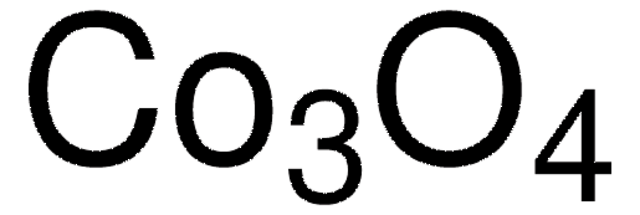933783
Cobalt(II) oxide
nanopowder, 50 nm avg. part. size, ≥99.5% trace metals basis
Synonym(s):
Cobalt Monoxide, Oxocobalt, Cobaltous oxide
About This Item
Recommended Products
Quality Level
Assay
≥99.5% trace metals basis
form
nanopowder
composition
CoO
storage condition
(Containers should be closed tightly and stored in a dry, cool and well-ventilated place.)
greener alternative product characteristics
Design for Energy Efficiency
Learn more about the Principles of Green Chemistry.
sustainability
Greener Alternative Product
avg. part. size
50 nm
bulk density
0.966 g/cm3
application(s)
battery manufacturing
greener alternative category
SMILES string
O=[Co]
InChI
1S/Co.O
InChI key
IVMYJDGYRUAWML-UHFFFAOYSA-N
Looking for similar products? Visit Product Comparison Guide
General description
Application
Signal Word
Danger
Hazard Statements
Precautionary Statements
Hazard Classifications
Acute Tox. 2 Inhalation - Acute Tox. 3 Oral - Aquatic Acute 1 - Aquatic Chronic 1 - Carc. 1B Inhalation - Repr. 1B - Resp. Sens. 1B - Skin Sens. 1B
Storage Class Code
6.1A - Combustible acute toxic Cat. 1 and 2 / very toxic hazardous materials
WGK
WGK 3
Flash Point(F)
Not applicable
Flash Point(C)
Not applicable
Choose from one of the most recent versions:
Certificates of Analysis (COA)
It looks like we've run into a problem, but you can still download Certificates of Analysis from our Documents section.
If you need assistance, please contact Customer Support.
Already Own This Product?
Find documentation for the products that you have recently purchased in the Document Library.
Our team of scientists has experience in all areas of research including Life Science, Material Science, Chemical Synthesis, Chromatography, Analytical and many others.
Contact Technical Service








